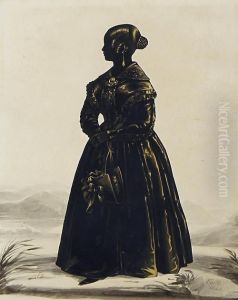Frederick Frith Paintings
Frederick Frith was an English painter born in 1819 in Harrogate, Yorkshire. Although not as widely recognized as some of his contemporaries, Frith played a significant role in the Victorian art scene, contributing to the landscape and genre painting traditions of the 19th century. His works often depicted the natural beauty of the English countryside as well as scenes of daily life, reflecting the social and cultural milieu of the time.
Frith's upbringing in Yorkshire, with its picturesque landscapes, significantly influenced his artistic direction. He was largely self-taught, showing an early interest in art that was encouraged by his family. In his early twenties, Frith moved to London to pursue his career as an artist, where he became involved in the vibrant cultural life of the city. He exhibited his works at the Royal Academy and the British Institution, earning the admiration of both the public and his peers.
Throughout his career, Frith was known for his detailed and colorful landscapes, which were praised for their realism and emotional depth. He had a keen eye for capturing the intricacies of natural scenery, from the changing seasons to the varied times of day. His genre paintings, which depicted everyday scenes and people, were equally acclaimed for their narrative quality and attention to detail.
Despite his success, Frith remained relatively modest and dedicated to his art, avoiding the celebrity status that some of his contemporaries sought. He was a respected member of the artistic community, known for his dedication to his craft and his contribution to the development of British art.
Frederick Frith passed away in 1906, leaving behind a legacy of work that continues to be appreciated for its beauty and historical value. His paintings are held in various collections and museums, where they continue to be studied and admired for their contribution to the visual documentation of 19th-century England.

